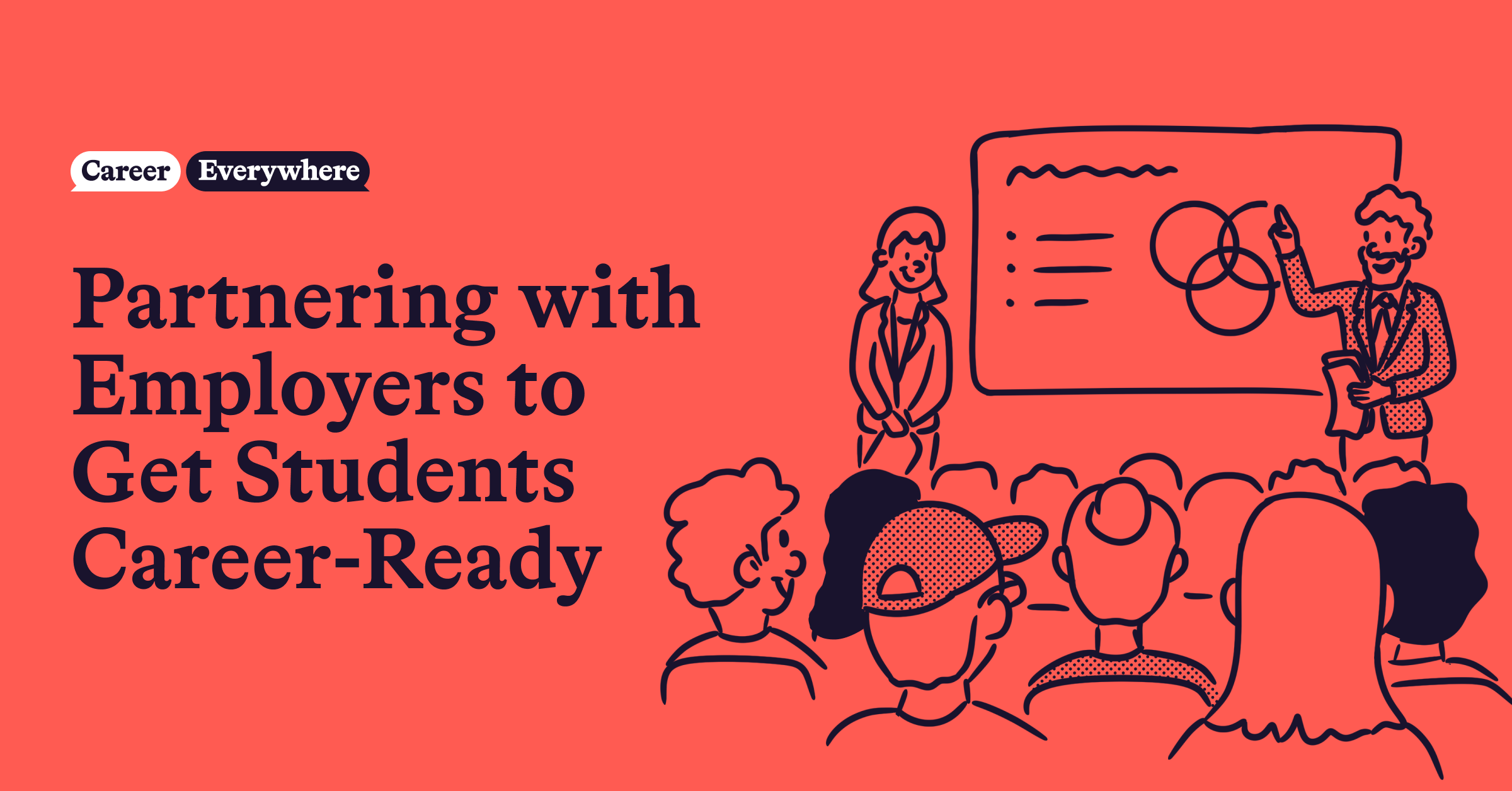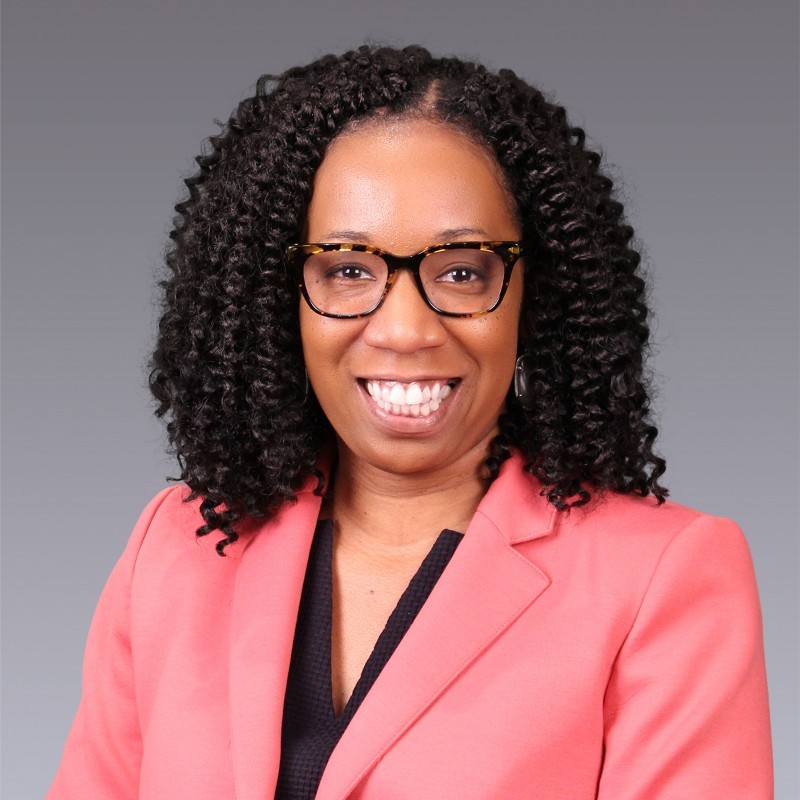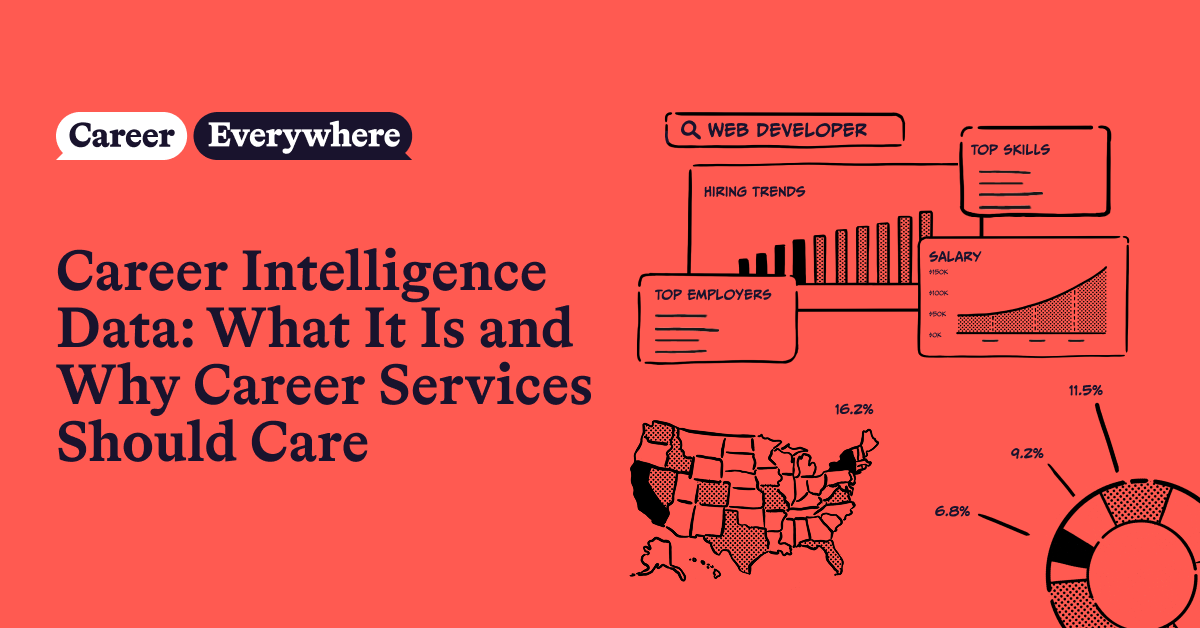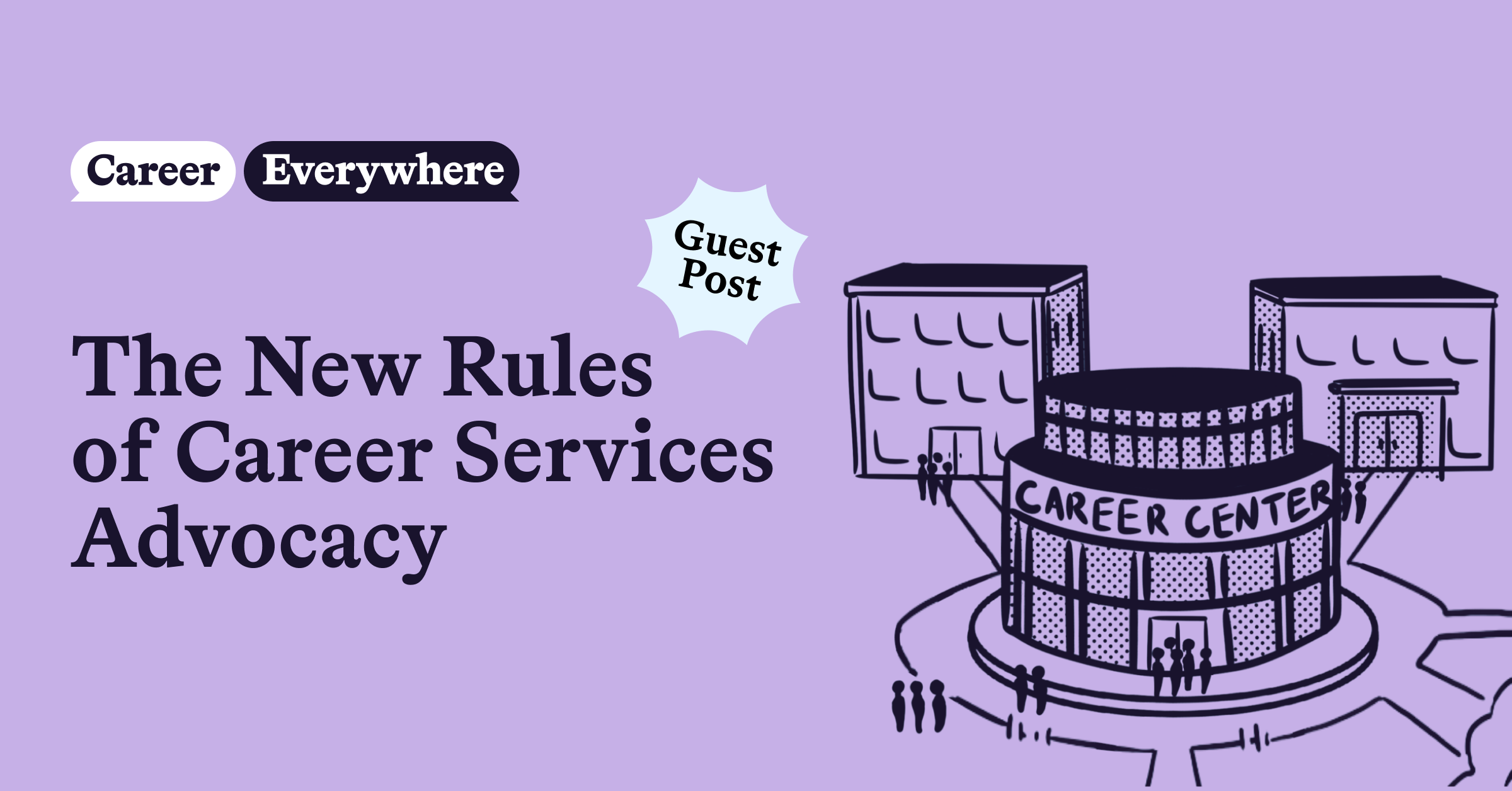
In one sense, the transition from college to career should be as natural as summer following spring. Graduates simply progress from one season of life to the next, continuing their journey of growth and development.
In reality though, that next step can feel more like crossing a chasm into a whole new world — one where midterm exams, GPAs, and office hours are suddenly replaced with performance reviews, KPIs, and meetings with your senior manager. New terms, technologies, schedules, and (perhaps most challenging) unwritten rules of office etiquette can make the shift from college student to career professional surprisingly tricky to navigate.

So, who’s responsible for helping students make a successful transition? Is it the career services team at their college or university? Or the employer seeking to recruit, hire, and onboard them?
If you ask Leonelle Thompson, the answer is “Yes.”
And she would know. Thompson currently serves as Manager of Early Career at Williams, an energy company headquartered in Tulsa, OK. But before that, she was the director of career and professional development at Langston University, as well as an adjunct professor and director of career development at the University of Tulsa’s Collins College of Business.
Thompson’s background has given her a unique perspective on the importance of cultivating career readiness while students are still in college (a core tenet of the Career Everywhere movement). It’s also given her a passion for helping career services teams partner with employers to make this happen.
In a recent interview, Thompson shared her perspective (and passion!) with us, offering suggestions for career services teams looking to make the most of their relationships with industry partners. Read on to see what she had to say.
What does career readiness look like to employers?
In any partnership, it’s important to have a common goal. For career services teams, this means knowing what employers consider “success” when it comes to graduates’ career readiness.
According to Thompson, readiness has a lot to do with professionalism. Professionalism involves navigating what Thompson calls the “unstructured structure” of a work day—knowing how to manage projects, communicate with co-workers, and ask questions when needed, even though none of that is spelled out in a syllabus.
Another aspect of career readiness is the ability to take skills learned in the classroom and apply them to real-world problems in a business context. Oftentimes, this is what employers are looking for in new hires…and not finding.
“We know that [students] have the skillset,” said Thompson. “What I’m not seeing is the application of that.”
To illustrate, Thompson pointed to the in-demand skills of written and verbal communication. From research papers to class presentations, students usually have plenty of opportunities to hone their communication skills. But from an employer’s perspective, the question is: can you apply those skills in a professional setting? Are you able to decide when it’s best to send an email versus a chat message, or make a phone call versus an in-person visit to a colleague’s office? And then, do you know how to write or speak effectively in each of those different mediums?
“So, ‘career ready’ means taking a look at the skills I’ve learned, whatever my major may have been, but then asking: ‘How do I apply that to a non-textbook situation in the workforce?’” said Thompson.
How career services can partner with employers to get students career-ready
When colleges and universities are producing graduates that employers say aren’t career-ready, it’s tempting to ask, “Who’s to blame?” But Thompson says that’s the wrong response.
“Cut out the blame. We’re in this together,” said Thompson. “This is Career Everywhere. We’re all part of this ecosystem.”
Instead, Thompson talked about the incredible potential for collaboration. While much depends on employers’ ability and willingness to “roll up their sleeves” and get involved, career services teams can do a lot to initiate and facilitate that involvement. Here are five ways to get started (listen to the full conversation with Leonelle Thompson for more):
1. Start a conversation with employers
It all starts with communication. Specifically, Thompson encouraged career services teams to be transparent about where they need employers to step in with additional guidance or support.
“First, it’s reaching out. Don’t be afraid to admit that you can’t do it all. Let the employers help,” said Thompson. “And you may not know what to ask, and that’s okay. But reach out to your big supporters, or even the ones who you want to get more engaged with, and just start the conversation.”
Of course, communication also requires listening. Thompson suggests keeping in regular contact with employers as a way to solicit feedback and keep up on local hiring trends. This can be as simple as a Zoom call to ask what they are seeing, both in terms of their own evolving business needs and the career readiness of the students they’re interviewing.
(Pro tip: Plan ahead by using the comparatively slower summer months to connect with employers. “Especially before the fall gets so hectic with career fairs and students enrolling and coming on campus,” said Thompson. “Use spring and summer to really gauge the employers to help in benefiting the Career Everywhere movement.”)
2. Establish more experiential learning opportunities
While corporate dollars are great, Thompson says the most effective career preparation requires collaboration that goes beyond that:
“We love the corporate dollars,” said Thompson. “But I think the time has come for the corporate bodies to be on-site, on campus, really helping to instruct the students. We can’t put all that on career services… [Employers] are the consumers of that talent, so let’s help curate that talent and get it to be what we want, or at least close to it.”
A formalized internship program is one excellent way to do this. But internship programs often come with a whole set of “to-do’s” that can create even more work for career services staff and their employer counterparts. So Thompson encouraged exploring shorter, less formal arrangements that still get students exposed to real-world settings and situations.
“I’m a big fan of case studies. Big fan of real-life work examples, job shadows, so they can get that real-time feedback,” she said. Other ways to close the gap between college and career include having employers come and give guest lectures in the classroom, or (better yet) bringing students on-site for a tour of their facility. Anything to show students, ‘Here’s how you would apply these particular skills that we know you have,’ and help the students realize those skills and really verbalize what those skills are,” said Thompson.
3. Partner to promote professionalism
The other key to career readiness that Thompson highlighted was professionalism—preparing students to navigate the unwritten rules of the corporate world.
Here again, she encourages career services teams to not feel like they have to go it alone. They can and should invite employers in to help address the issues or concerns they’re seeing during the recruitment and onboarding process. (Some companies, like Williams, have a dedicated early career team that likely already has resources they’d be happy to share with your students!)
So, next time an employer shares feedback about students who are showing up less than fully prepared for their interviews, Thompson recommends responding with a request: “Can you all come in and do a session on that? Can you come in and help us help the students?”
For employers, this can actually be a great opportunity to get in front of students, promote their brand, and generate goodwill. The key though, is for them to deliver real value. “So yes, tell me about your company,” said Thompson. “But there has to be a professional development aspect to it.”
Topics for these sessions could include financial acumen, professional communication in an office setting, conflict resolution, or even the simple importance of timeliness. Any topic “that would develop a student in the career readiness space, that [the student] could then tie back to that particular employer,” is a good one, Thompson said.
4. Don’t neglect the startups or smaller companies
When it comes to partnerships, the who is every bit as important as the what. And while it’s always nice to associate with a big-name employer, Thompson offered an important reminder to not overlook the young startups and smaller companies in your region as well.
“You don’t always have to go for the Fortune 500 companies,” she said. “It may be a startup that can teach about professionalism and how it works in the entrepreneurial space when you’re trying to get funders. All of that is very transferable.”
Of course, working with smaller employers may also require a shift in expectations. While larger companies may have more to offer in the way of internship and full-time job opportunities, smaller, newer companies might not have the capacity for that yet. But that doesn’t mean they have nothing to offer your students.
“I think you knock out quite a bit of employers if the expectation is that they have to hire,” said Thompson. “I don’t think that should be an expectation, because it’s really about the development piece for the students… So, don’t count out the startup or the company you may not have heard of. You definitely vet them, but you don’t always have to go for the big companies all the time.”
5. Ask good questions of employers
One of the most powerful ways for career services teams to partner with employers is by simply asking good questions—not just as a way to learn, but also as a way to prompt innovation and invite deeper collaboration from the employer side.
What is a “good question?” Thompson recommends the kinds that are open-ended and lead to further conversation.
“One question I would love to hear in these calls,” said Thompson, “is just, ‘What are we doing right and what can we improve on?’ And, ‘Where would you like to help?’” Questions like these are more likely to help employers offer new ideas and meaningful feedback rather than simply rating their career fair experience on a scale of one to five.
Another tip Thompson offered is to focus questions less on logistical issues (e.g. “How organized was the career fair? Were you able to find parking?”) and more on the employer’s actual experience interviewing, hiring, and onboarding your students.
“A question I would love is, ‘So you have interns with you right now, and you have new hires that are starting in June, July, etc. On their first day, what did you see that did not go well?’, said Thompson.
Honest feedback to a question like that may be hard to hear at first, but is far more likely to help you make changes that move the needle on students’ career readiness.
Conclusion
While inviting more involvement from employers may seem like it could diminish the importance of career services on campus, Thompson insists it’s the opposite.
By establishing real, ongoing relationships with employers, career services teams actually position themselves as less of a transactional service center and more of a transformational partner for early career success. That’s a shift that benefits students hoping to make a successful transition to the workforce, and the employers looking to your institution for career-ready graduates.
Learn more about developing and maintaining effective employer partnerships by listening to the full interview with Leonelle Thompson on the Career Everywhere podcast.
To learn how uConnect can help you engage more employers and students, fill out the form below to schedule a demo.


